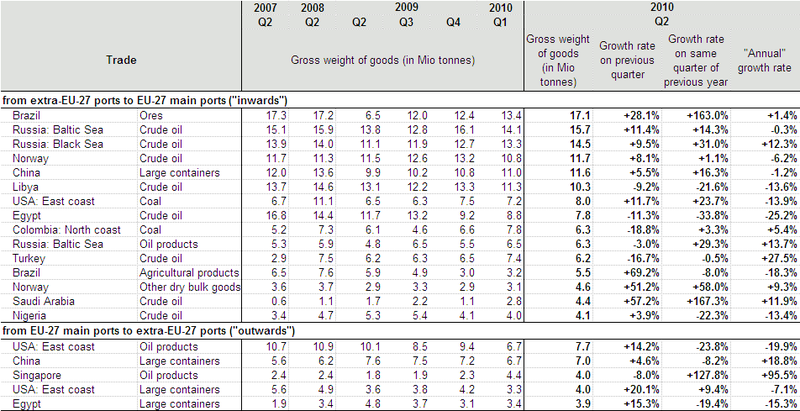File:Top 20 extra-EU-27 maritime transport trades (1) by gross weight of goods handled in EU-27 main ports during the 2nd quarter 2010.PNG
Revision as of 12:18, 2 March 2011 by EXT-M-Da-Silva (talk | contribs) (uploaded a new version of "File:Top 20 extra-EU-27 maritime transport trades (1) by gross weight of goods handled in EU-27 main ports during the 2nd quarter 2010.PNG")

Size of this preview: 800 × 411 pixels. Other resolutions: 320 × 164 pixels | 952 × 489 pixels.
Original file (952 × 489 pixels, file size: 53 KB, MIME type: image/png)
(1) The concept of maritime transport trade is defined using the following three variables:
- 1. Direction: “inward” transport is distinguished from “outward” transport.
- 2. Partner geographical area: usually this corresponds to one country, with the exception of countries of such a size and/or geographical position that the location of individual ports may be quite different and may have a strong impact on the maritime route followed. For example, the ports of the USA are grouped in two geographical areas: "East coast" (including Atlantic, Gulf of Mexico, Great Lakes and Puerto Rico) and "West coast" (Pacific).
- 3. Type of cargo: the following thirteen cargo types are used in Table 4: liquefied gas, crude oil, oil products, other liquid bulk goods, ores, coal, agricultural products, other dry bulk goods, large containers, Ro-Ro mobile units, forestry products, iron/steel products and other general cargo. The first four types constitute "liquid bulk", the subsequent four types "dry bulk", and the last three types "other general cargo not elsewhere specified", as presented in Tables 2 and 6.
File usage
There are no pages that use this file.